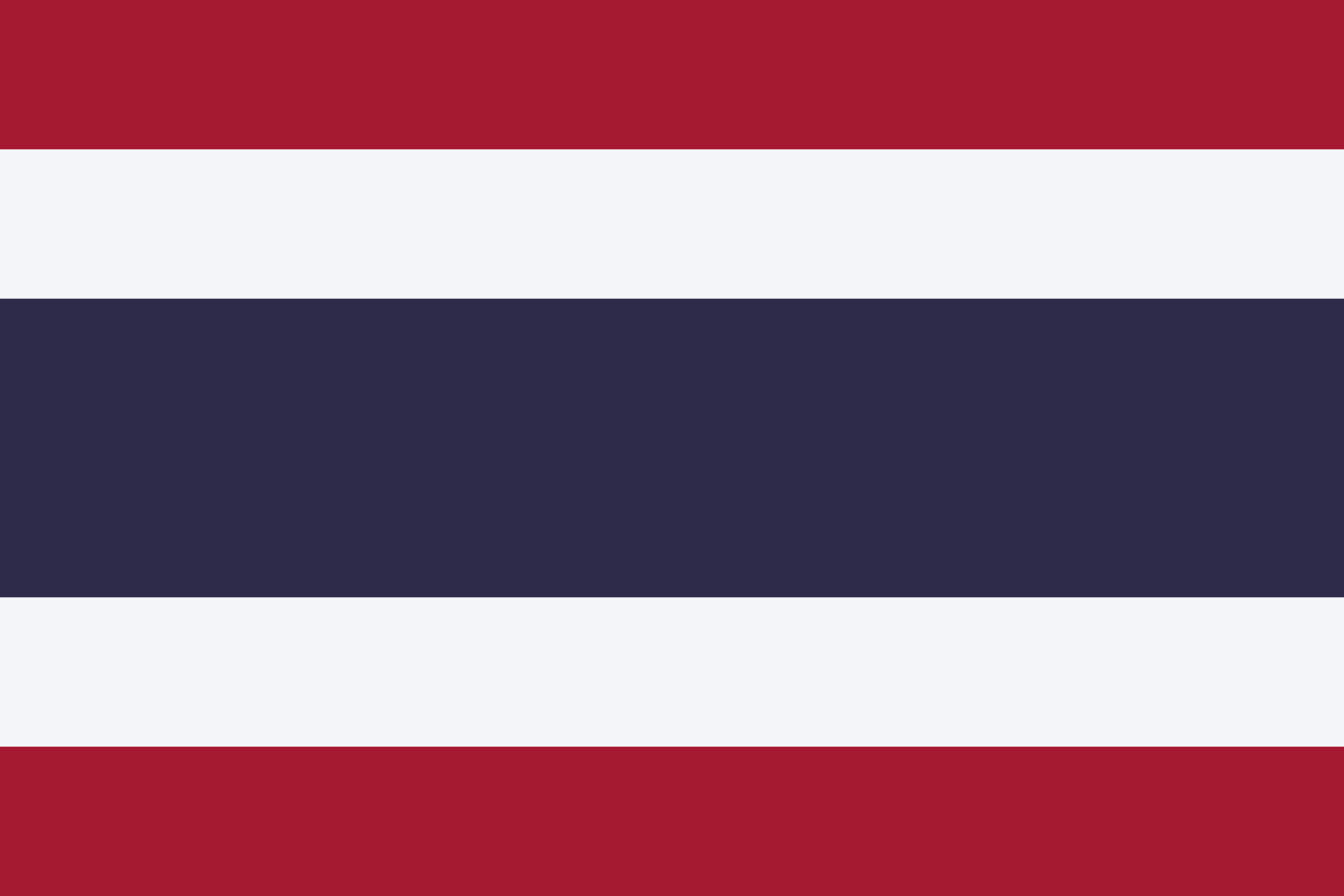National Symbols: Flag Details
Date First Used
September 28, 1917
Nickname(s)
"Thong Trailong," "Triaranga" ("Tricolor")
Design Elements
Five horizontal stripes of red, white, blue, white and red from top to bottom. The white and red stripes are the same size. The middle blue stripe is twice the width of the other stripes.
Symbols: None
Colors: Red, white, and blue. Red is for the Thai nation, white stands for purity and the dominant religion (Buddhism), and blue represents the king.
Proportions: 2:3
Variations: The naval ensign is the national flag with a red disk in the center that touches both red stripes. Inside the disk is a caparisoned elephant in profile.
History
In the 1600s, Thailand (then known as Siam) used a solid red flag, as did many neighboring countries. As commerce between Thailand and its neighbors increased, a unique flag was deemed necessary. Thai King Rama I added a white-and-gold wheel, or chakra, to navy vessel flags. Among other things, the chakra is a weapon of the gods and a symbol of the Chakri dynasty that once ruled Thailand. Later, a white elephant in profile appeared in the middle of the chakra. All of these flags were unofficial.
King Rama IV created Thailand's first official flag in 1855. He retained the red background, while the white elephant facing the hoist became much larger to make the flag more easily recognizable. The white elephant is a royal symbol of the country, as well as a lucky motif in Thailand. Rama abandoned the chakra design.
In the early 1900s Rama VI made a series of changes to the flag. Promoting Thai nationalism was high on his agenda. For a brief time, the elephant was smaller than on previous versions; it was also caparisoned, or fitted with ornate cloth coverings. Shortly thereafter, the king chose a simpler, more modern design, partly to make the flag easier to manufacture. Initially, the flag remained red and white, with five equal-sized alternating stripes starting and ending with red. Within a year, he widened the middle stripe; shortly thereafter, he changed it to blue. By 1917, the modern Thai flag was complete. During World War II, the Japanese occupied Thailand and reintroduced the red flag with the elephant. This was abandoned in favor of the modern tricolor as soon as the war ended.
Proper Uses
The flag should be treated with dignity. It must be handled carefully to avoid damage. Worn flags must be replaced. Torn and damaged flags should be destroyed by burning them in private. The flag should be hoisted briskly and lowered ceremoniously. When displayed with other flags, the Thai flag is to be hoisted first but lowered last; all flags should be the same size and hoisted to the same height.
Legends, Controversies, and Trivia
Thailand adopted the red, blue, and white tricolor flag due to a 1917 royal flag decree. There's a story that the king saw a Thai flag upside down in the aftermath of a flood, and this moved him to design a flag that was symmetrical so that it couldn't accidentally be flown upside down.
White and red have been used on the Thai flag for years, but it's not clear why King Rama VI chose blue as the third color. It's sometimes said that it was the auspicious color for the day he was born. It's more likely, however, that he chose it to demonstrate allegiance to World War I Allied powers.
Adopted in 1917, the Thai flag is one on the oldest national flags still in use.
Copyright © 1993—2025 World Trade Press. All rights reserved.

 Thailand
Thailand 